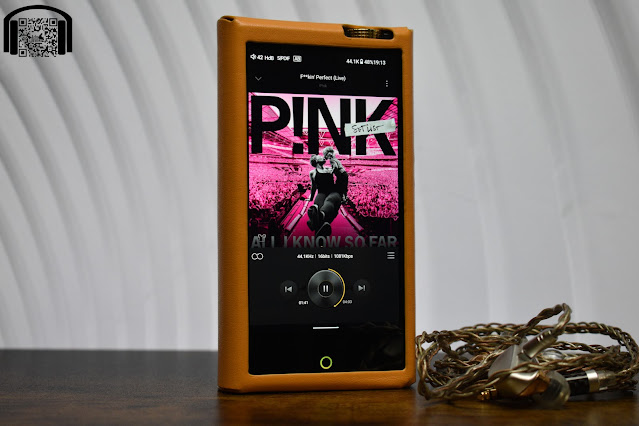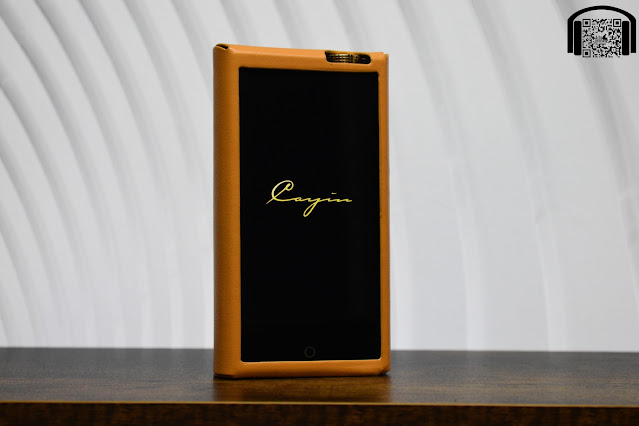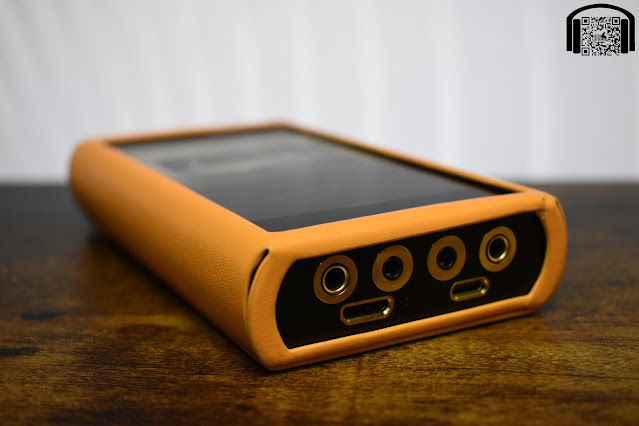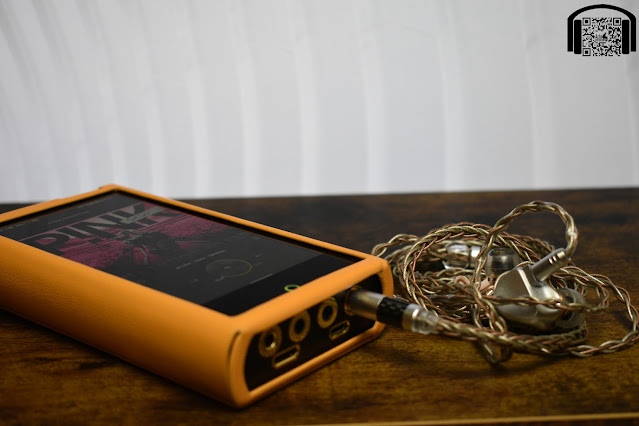How come you didn’t like the “i” stuff…?
The iHA-6 in particular seems to be well regarded.
I found the iHA-6 to be weak on detail resolution, somewhat grainy, and with a tendency to obscure (or fail to resolve) micro-dynamics. This got worse in high-gain and/or high-current modes.
There are, for me, simply better sounding (subjective) and better measuring (objective) options available for significantly less money.
I felt the iDAC-6 was just “meh”. The only interesting factor was the tube mode. Otherwise there are any number of DACs between 1/7th and 1/3rd its price that I would rather listen to.
Thanks for your feedback Ian, never ceases to amaze how two people can hear things differently.
I enjoy the iHA-6 immensely but then again there are so many variables.
And I’m sure that I don’t have the experience that you do either.
I thought it was well priced all things considered, and it’s definitely a decent step up for me for now.
If I may ask, what are a couple of other amps I should look at when I start hearing what you do…? 
As long as you enjoy it, that’s all that really matters.
I don’t know what experience you have.
But the more you get, the more you’ll find things that you once thought sounded good/great start to show flaws. Listening practice and education/training make a big difference. For example, if you can’t reliably detect distortion in an easy, controlled, dual-tone test at -35 dB, you definitely won’t hear it at -70 dB while playing music.
And the chain matters.
What something like a Susvara or a Utopia reveal in/about an amplifier is very different to what a Sundara or a AEON will expose (I have no idea what cans you use).
It depends a lot on your chain and your budget.
Transducers first.
There’s not a lot of point in swapping your iHA-6 for what I’d have bought in its place (nor will you necessarily like what I would have bought better*), even if it is technically quite a bit better. You’ll wind up losing money overall. Better to just move up when the time comes, and depending on when that is the options available could be quite different to what’s there today.
I certainly am enjoying it, at the end of a PC based system with Resonessence Concero and Audio-gd DACs and HD6xx, LCD2F, K701 and TH-X00 MH, all cabled balanced. It’s the best amp I’ve heard at under $1000.
I’ve been listening to headphones actively for 4 years, but a lot of hi-fi prior to that in my 57 years.
I’m now at a stage where my next purchase will be a TOTL headphone, so agreed!
Many thanks for your feedback and taking the time to do so. Much appreciated.
Anyone have a decent idea on what a good price for a used ha-300 is going for? I’ve seen a few listings but they seem high $ and typically sit for a bit.
The Mk2 had yet to be released and I’m through waiting for it.
I just purchased the iha-6 and it is very weird amp to me, it has very metalic sound if I can say it this way, I am still around 50-60 hours in burn and it already sounds better but i will leave it to do the full 300 hours and see if its going to improve, also an issue i wanted to point out which I found quite a few people having the same issue, basically there is a hiss on the background and it doesn’t sounds incredibly clean, in comparison, my JDS atom sounds cleaner… and not to talk about the Burson, now the separation is good, soundstage is good, but its just something there probably is the hiss i am hearing, on the LCD-X it is quite noticeable, on the HD660S not so much neither on the ZMF Eikon, in fact it sounds cleaner on the ZMF headphones but again this metalic sound is killing the fun on some 30-40% of the songs. Does anyone have had similar experience and does burn in might clear the issues? For now I would rank it as overpriced unit, it just didn’t impress me, nearly everything i have listened under £700 have sounded better than this amp, and its weird as it has been highly praised. I decided to also test my dac in case and tried it with other amps and its been perfect with no issues, for cables from amp to dac i use balanced XLR Chord Clearway cables and for power cable i use the Merlin Tarantula, its plugged directly to the wall socket. It has potential to be a great amp but its just not and its far away to be one in my opinion.
Forgot to mention that i am using it on low gain to reduce the noise , i have tried low or high current but didn’t made any difference on the background noise.
Are you using XLR out to listen to your hp?
The non balanced outs of the Cayin IHA-6 are meant to be poor.
I only every used the XLR out with LCD-X and many other headphones and no hiss for me or metallic sound.
Hey I was just going to update my post, so I sorted the hiss , now the metallic sound is still kinda there but it has dramatically improved for around 24 hours, really weird how burn in can affect the sound so much, never witnessed an amp who is so dependant on burn in… I will leave it to burn in for 4-5 more days and see what is the result. And yes to your question I use the XLR output, after fixing the hiss, seems to be much better, the piano however still sounds very bright and metallic, example of song is Melody Gardot - Morning Sun , I use Cambridge audio streamer as a source, and using Qobuz.
I sold my Cayin iha-6 recently but cant remember it ever sounding metallic to me. Maybe clinical but not metallic.
My biggest impression about it was how powerful it was but sure timber probably isn’t it strongest point.
In comparison my new Ferrum Oor seems less powerful even if specs don’t seem to indicate this.
It sounds like there is a problem with your amp and I doubt the solution is more burn in, based on my experience with it.
Out of the box my amp sounded as it should and I could perceive no changes in SQ whatsoever with regular use.
The amp should sound full and dynamic with no metallic edge or glare. It is not the smoothest amp around but it is accurate to the source without embellishment.
You don’t mention your source but I pair the iHA-6 with a Yulong D18 (balanced outputs) fed via SPDIF coax from a Resonessence Concero as USB bridge.
This chain seems to be a good synergy as the D18 is a smooth and organic sounding DAC with excellent stage and Sabre detail without the glare.
If the amp remains as is I would return it for another unit.
I use the high impedance SE output (120Ohm) with HD6xx and in my humble opinion it is far from poor.
Not sure where the impression that the iHA-6 SE outs are poor originated but it’s just not accurate.
Yes, the balanced outs do bring all usual benefits and the amp is designed to be used this way, however the SE section is no afterthought and I recommend trying 300 or 600Ohm cans with them…you may be pleasantly surprised what a high outputZ does for a pair of HD6xx… ![]()
PS just want to say that the (anecdotally) much-maligned SE performance of the iHA-6 is, to my ears, unfounded. I enjoy my single ended DACs just as much with this amp. And it has plenty of juice to go around…in other words, one doesn’t need to go balanced purely for the extra V.
They are launching a new DAP, Cayin N7.
As a C9 owner, I really wished it was a DAC, not a DAP ![]()
Review - Cayin N7

TLDR version on YouTube: TDLR - Cayin N7
The Cayin N7 has been sent to me on loan as part of a tour organized on Head-Fi. The only requests were that each participant ship on to the following participant after 14 days and that each participant posts their impressions on the device on Head-Fi no more than 14 days after shipping the device on to the next participant (or in my case, back to Cayin, as I am the last person on the EU tour).
The official page for the Cayin N7 can be found here: Digital Audio Player_N7_Personal Audio_Cayin
As always, this is a non-affiliate link, meaning that I do not receive anything in exchange for clicks or purchases made.

Intro…
I don’t think Cayin need any introduction if you are someone who is contemplating a DAP that costs over 2000€. Cayin have been around for a while and are known for making high end Digital Audio Players, along with some very interesting desktop tube amplifiers and many other products.
If you don’t know anything about them and you landed on this review because you are looking for a DAP, then you might be asking why a portable music player costs so much? I know I would be!
The N7 offers a lot of technology in the DAP format, with things like 1-Bit Resistor Network DSD Decoding, dual A and AB amplifier modes, I2S connectivity, separate line and preamp outputs (both balanced and unbalanced), along with a lot of other things. Rather than me just list off a list of specifications, if you want to see all of them, just visit the page I linked above.
Why is all of this special? Well, a lot of them are not things commonly found in desktop solutions, never mind in a portable solution, so it definitely puts them in a league above many of the other contenders in the DAP game.
Does this make it a great DAP and worth the price tag it comes with? That is what I am going to address in this review, at least in my own opinion.

Build and Aesthetics…
You may have noticed that I skipped the presentation completely. That is because this review unit was shipped in a simple box to save on shipping costs, so I cannot comment on the way it is packaged or what the unboxing experience is like.
As far as build, the first and most obvious is size and weight. This is a large device. By large I mean that is is around the same dimensions as my smartphone but 3 times as thick. It is also a very heavy device, coming in at around 380 grams. It is not the heaviest (or largest) of Cayin DAPs but it is not something that I find comfortable in my pocket (I hate things in my pocket anyway) and it appeals to me more as a transportable, all-in-one, music player, than an actual portable (as in, carry on my person) device.
As far as aesthetics go, the device arrived in a beautiful leather case, with a gold/brass coloured backplate in a grille style. The case closes magnetically and has a cut out for the dial at the top, along with a cutout for its (multiple) connectors at the bottom. The right side of the case has the buttons marked on the leather along with their logos, meaning you can clearly see what each button does.
I think the device looks great in the case, much nicer that it looks out of the case, although it is not a bad looking device without the protection. The front sports the 5” screen which takes up the majority of the real estate, with around 2cm at the bottom that has the multifunction touch screen button in the center. This touch button has a coloured ring that changes colours depending on the state of the device, which is a nice touch.
The sides are rounded black metal, making it comfortable to hold on to, even if it is a little slippy without the case. The left side has the micro SD card slot, while the right is home to the power, up, down and play buttons.
At the top of the N7 there is a nice gold coloured volume wheel that is well protected when wearing its leather jacket. Finally, the bottom is where we find the connection points. We get balanced pre/line out, unbalanced pre/line out, balanced headphone out, unbalanced headphone out, I2S, Coaxial and USB. This is quite a bit of connectivity as I said before.
While I am not really a fan of the size and weight of this device, holding it in your hand does portray the impression of having a quality device, with the leather case adding to that impression.

Functionality…
The N7 runs Android 12 on a Snapdragon 665 with 4GB of RAM. As this is an android device, coming with the Play Store installed, it will let you install most of the apps you could want/need. The 64GB internal space is not a huge amount but should be more than enough if you are wanting to use this for its intended purpose (as a music player) and are storing the local files on an external MicroSD card (accepts up to 1TB).
The system itself is pretty snappy (although I haven’t installed any apps other than those included and Tidal) and responds well to touches and navigation in general. Using the Cayin music app, it was also pretty quick to read my test SD card, reading almost 7.000 tracks in less than 5 minutes (which is better than on my phone for the same test).
I am not a huge fan of Android based DAPs as I prefer my music players to just be music players, but at least it responds well and is a rather recent version of Android (many players still use older versions), meaning it should be ok with app updates for quite some time.
As this is an Android based device, there isn’t much need to go into the details of how to use it. If you can use a modern Android phone, you can use the UI of the N7. Gesture navigation is activated by default but this can be turned to the classic three button set up if you prefer.
The included music playing apps are Hiby Music and Cayin’s own app, which is basically the Hiby app with their own skin on it. You can of course install any music player of your choice (and you can also download the Hiby app from the Play Store to your phone if you have never used it and want to try it out).
From the drop down menu at the top, you can quickly access the gain settings, the amplifier type, switch the output from line to pre, change the DSD output specification, choose the digital output and access the audio settings. You can edit what quick accesses you want in the drop down menu, as you would with any normal Android device.
The audio settings basically give you the same options as I just listed, along with the possibility of changing channel balance, setting a max volume, inverting the volume control direction and activating/deactivating MQA decoding.
A nice feature of the N7 is that Hiby Cast is also installed, meaning that you can use your phone to control the DAP remotely. This is something that comes in very handy when using the N7 connected to desk systems hooked up to speakers etc.
Volume is obviously controlled by the volume wheel but once you touch the wheel,the current level is displayed in numbers on the screen, with a + and - button to make single increments from the touch screen. While the numbers are displayed, you can also swipe the screen to increase or lower volume a lot quicker.
I could go on for a very long time about the functionality, after all, it is Android, but I think we should get on to the interesting part…

Sound…
One of the things I like about reviewing sources is that I get to choose what IEMs and headphones I want to use, meaning that I get to spend more time than usual with my favourite sets instead of the IEMs or headphones I am reviewing.
Over the time I have had the N7 on my desk, I have mainly been using the Svanar, the IE600, the Quintet, the Talos, the Arya v2 & Stealth, the HE1000se (which I have been listening to a lot lately) and the HD6XX (as that is always a must for source reviews).
One of the things I have noticed with the N7 is that, while it is not the most powerful of devices (500mW @32 Ohms balanced), I didn’t find that it struggled with planars. With IEMs, I had absolutely no issues and a lot of the time found myself on low gain around the 50 mark or less (my listening levels are usually pretty low, so that is something to consider for context).
In general I found the sound to seem more spacious than on many other alternatives, making things have more openness to them and improving the presentation with IEMs, which I usually find quite lacking in the soundstage department.
My first hours with the N7 were using the Svanar in the AB amplifier mode. While they sounded good and had a nice presentation to them, I did not feel that they were anything amazing. Yes, better than many of the portable options I have tried but I didn’t find myself blown away by the result. I then switched to the class A mode and… wow! Things became much more alive and, well, just a lot better in general.
That additional space is present with the AB mode but when switched to A, that extra space seems to be fuller. Things have more life and I found myself thinking that this is probably one of the best pairing I have heard with the Svanar. Bass is nicely textured but in no way unnatural and the upper ranges just have that little bit of smoothness to them that reminds me of why I love these IEMs.
With the Quintet, I found that the difference between AB and A was not as apparent. Yes, there was a slight change but not to the point I experienced with the Svanar. In general I find the Quintet to sound good with the N7 but I don’t feel the experience changes much between some of my dongles and the DAP.
With the Hifiman planars, I again found that the pairing is very good, although I have to say that I personally preferred the HE1000se to the Arya for some reason. That doesn’t mean that I don’t like the Arya with the N7 but I just found the pairing with the HE1000se to be much more exciting, maybe due to them being easier to drive than the Arya. Again, that class A mode gave the HEKse something extra that makes them sound glorious to my ears.
The HD6XX is a set of headphones that I can love or hate, depending on the source, the music, my mood and the time of day. On the day that I spent the time pairing them with the N7, I was mostly listening to female vocals and Jazz, and I have to say that, with the class A mode, this is the best portable setup I have heard with them. We have all heard about the “infinite scaling” of the HD6 series but I don’t think it is scaling per se, just that it seems to click with certain sources and the N7 in A mode is one of them. Again, to my ears, on that day, with that music. I wouldn’t say they sounded amazing in AB mode (good yes, but not amazing) and I would still prefer a tube amp for them, but for a portable device, I have to say that the pairing is very good.
I did find that I would find myself choosing a higher gain with headphones and dropping the volume level a bit to compensate. This could be totally psychological but I just felt that it seemed clearer and more open with headphones.

Conclusion…
The Cayin N7 is a DAP that offers a lot of performance in a “trans”portable package. It is not something that I would choose to carry in my pocket, nor take with me everywhere, but I do think it is something that gives you a great system that rivals a lot of desktop options in a format that you could easily take to the office or on vacation.
I find that the class A mode is fantastic, making most things sound alive and vibrant, offering a very enjoyable listening session no matter where you are. It has plenty of connectivity for it to be used in any number of systems, not just headphones. I could see this easily being the “brain” of someone’s system, where they take it to the office and enjoy it all day, and then take it home in the evening or at weekends and hook it up to their main speaker systems etc.
Yes, the price is not exactly cheap, but if you compare it to many other things that you can pick up for the same price, it is on a level to compete, even with some desktop options as I said. If you were to build a desktop system with this level of connectivity and performance, you would be looking at a minimum of 500€ for the media player (if you were to use a phone that rivals this DAP), another 500€ to 1000€ (at least) for a DAC with this implementation and then another 1000€ or more for an amplifier, which may be more powerful but would not have the two AB and A modes you get here. So, with the N7, you get all of that in a “trans”portable package and for less money.
I can’t say that the AB mode is anything that I have fallen in love with. Yes, it sounds good, but not enough for me to think about running out and buying one. However, the class A mode is a different story. I find the A mode to be spectacular when you find the correct pairing.
The negative is that using it in class A does make the device run rather warm and the battery drop rather quickly but I guess everything has its price ![]()
As with all of my reviews, this is also available in Spanish both on my blog (www.achoreviews.com) and on YouTube (www.youtube.com/achoreviews)